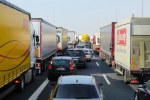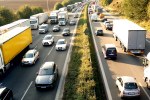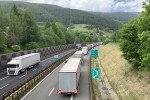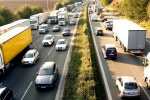News
Point of view: For a cultural change in transit traffic
Transit traffic is associated with CO2 emissions, motorways against an Alpine backdrop and sheer endless political discourse. But trade across the Alps – and thus transit traffic crossing the Alps – is as old as the history of settlement within the Alps and has had a decisive influence on cultural and social development in the Alpine region. Transit traffic does have positive aspects when places and regions along the trade routes benefit.
A look back: trade was the basis for the emergence of advanced civilisations through the transmission of knowledge, technological innovations as well as social and cultural developments. For a long time, this also applied to trade across the Alps and thus to transit traffic, which has existed for centuries. But this does not apply to the transit traffic of today.
A look at the volume of goods traffic provides an explanation: 4,500 tons of goods were transported over the Brenner Pass. Mind you, this was at the end of the 15th century. The villages along the trade route profited from the trade traffic, both economically and culturally. Some 500 years later, 51,000,000 tons are transported over this Alpine pass every year. The profits are now booked elsewhere – at least not in the valleys crossed by the traffic. This is not only due to the fact that today’s transit traffic is difficult to compare, both quantitatively and qualitatively (vehicles, route lengths, speeds, etc.). In contrast to the past, the regions affected by transit traffic have hardly any opportunity to intervene directly in events and participate in trade. What is supposed to help the large European economic metropolises north and south of the Alpine region to become more competitive in global trade is often an ecological and economic nail in the coffin for the affected Alpine regions.
The EU’s new infrastructure costs directive would have had the potential to permanently improve this situation. External costs arising from road freight transport – for example from noise – are at least partly charged to the polluter, and sensitive regions such as the Alpine region could levy additional toll surcharges. Rail freight transport would get a chance to regain former market shares: billions are after all being invested in drilling gigantic railway tunnels through the Alps, and these should also be used. But cold water was inevitably poured on the ambitious draft of the directive in the run-up to the political vote, so that now a very watered-down version is ready for decision. Driving bans, closures and ultimately blockades: the affected Alpine regions have little choice but to resort to such measures, some of which are difficult to enforce legally, with little potential to permanently reduce road freight traffic. It is to be hoped that the last word has not yet been spoken.






